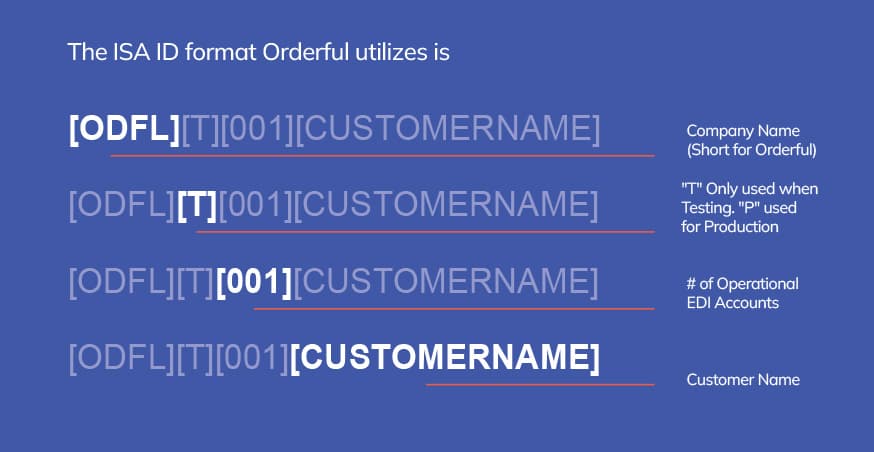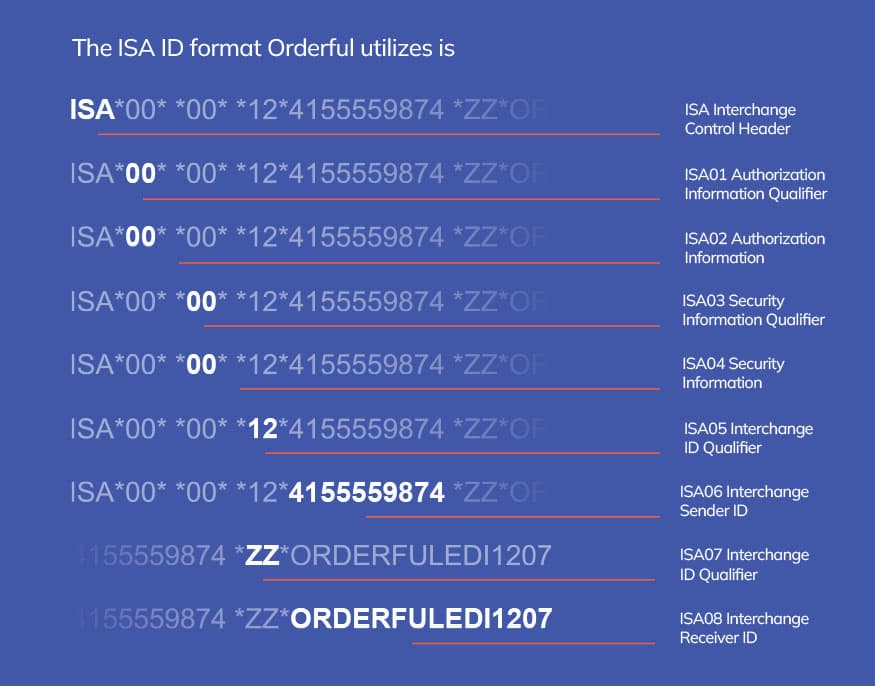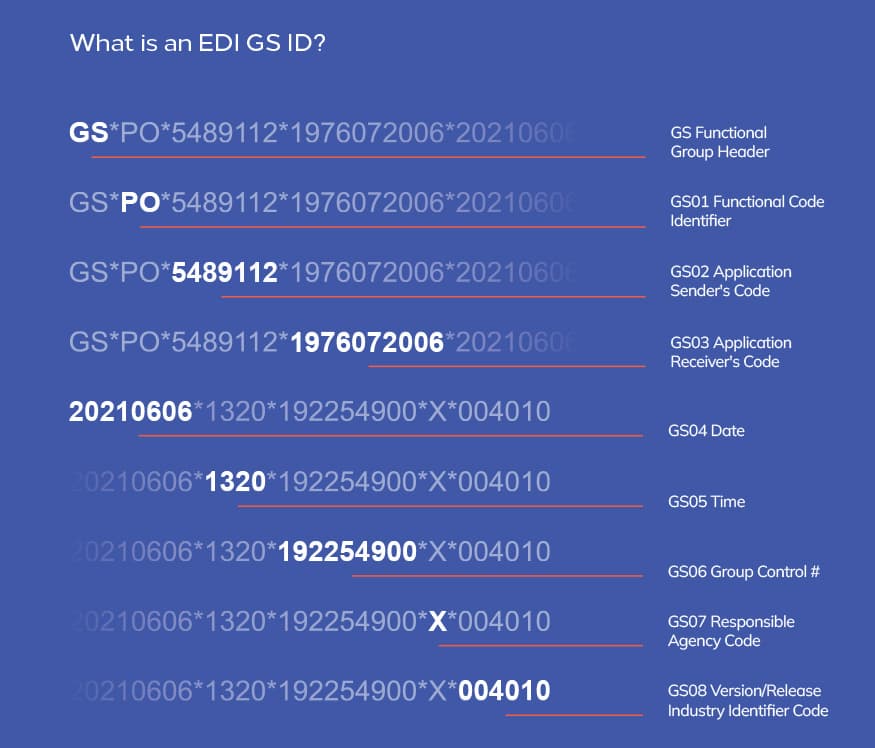Trading EDI data is confusing. You need to transact with a trading partner, and the first piece of information you need is a unique identifier called the ISA ID.
An EDI ISA ID is a unique identifier in X12 transactions that defines the sender and receiver within the interchange envelope. It ensures that electronic documents like purchase orders, invoices, and shipping notices are sent and received by the correct parties.
If you are just getting started with EDI, the ISA ID is one of the first requirements you will encounter. Let’s explore what it is, why it matters, and how to format it correctly.
Getting started in EDI X12
In EDI X12, the Interchange Control Header (ISA) is the beginning segment of EDI documents. It forms the first part of the interchange envelope, and all other EDI data is placed within that envelope.
The purpose of the ISA segment elements is to identify the sender and receiver, date, time, and control number information. The first order of business is the ISA ID.
Choosing your ISA ID for EDI
For companies new to EDI, the ISA ID can be challenging because it must be unique on the network you are trading on. There is no central repository of master ISA IDs. You will need your own ISA ID as well as the ID of your trading partner. These are designated as SENDER and RECEIVER in the X12 format.
It is not necessary to register your ISA ID with a central authority. The key is to choose an ISA ID that is unique and then share this identifier with your trading partners.
Three common ISA ID solutions
To address the challenge of choosing a unique ISA ID, companies typically turn to one of three common EDI solutions:
- DUNS number: Dun & Bradstreet’s Data Universal Numbering System
- Telephone number: A valid business phone number
- Mutually defined identifier: A unique code agreed upon by both trading partners
In total, there are more than 30 types of identifiers that can be used in EDI. Depending on the type you choose, you must include the appropriate ISA ID qualifier. This two-digit qualifier comes before the ISA ID and describes the identifier type.
Common ISA ID qualifiers
Qualifier | Identifier Type | Example |
|---|---|---|
01 | DUNS number | 123456789 |
12 | Telephone number | 2125551234 |
ZZ | Mutually defined ID | ABC123 |
Example ISA ID format for EDI

Take note, the “T” is only present when the ISA ID is part of a test and the number refers to the amount of operational EDI accounts.
Here’s an example using a phone number to identify the sender and a mutually defined identifier for the receiver:

When creating your ISA qualifier and ID, communicate closely with your trading partner, be creative to select something unique, and test the file to make sure that you’re able to identify each other.
One frequently asked question about ISA ID numbers is, “What is the correct length for an EDI ISA ID?” Visit this help document for more on the topic.
What is an EDI GS ID?

Your EDI GS ID (also known as the GS ID or Group ID) is normally the same as your ISA ID. If you already have ISA IDs for you and your trading partner, you have the information you need. The application sender’s code should be entered into the GS02 position in an X12 transaction, with the application receiver’s code being entered into the GS03 position in an X12 transaction.
Other EDI X12 segments
For context on how and where the ISA ID fits into the overall EDI X12 transaction, the segments are as follows:
- ISA segment: Interchange Control Header, where the ISA ID is entered
- GS segment: Functional Group Header for a set of documents of the same type
- ST segment: Transaction Set Header for an individual document
- SE segment: Transaction Set Trailer
- GE segment: Functional Group Trailer
- IEA segment: Interchange Trailer, closing out the envelop
Best practices for ISA IDs
- Always confirm your ISA ID is unique on the trading network
- Document and share your ISA ID and qualifier with all trading partners
- Test ISA ID exchanges before going live
- Keep consistency between ISA ID and GS ID values for clarity
Now that we’ve gotten through your initial ISA ID challenge, are you ready to spend time working through setting up the next 20 lines of your EDI message just for one trading partner? If you’re exhausted by the idea alone, consider connecting to the Orderful EDI API for simplified canonical EDI mapping. Once you’re integrated to the master schema you can connect to any trading partner in your supply chain. Make sure to show up with your ISA qualifier and ID in tow and the rest of the integration can be seamless.
Download our white paper Why EDI is such a headache for suppliers–and what you can do about it.
Interested in learning more about EDI? Whether new to EDI or looking to deepen your knowledge, LearnEDI.org is here to help you understand how EDI can improve your operations, or check out our pricing page to learn more and book a call.
EDI ISA ID Frequently Asked Questions
What is an ISA ID in EDI?
An ISA ID is a unique identifier in X12 EDI transactions that identifies the sender and receiver of electronic business documents.
How do you choose an ISA ID?
You can choose an ISA ID based on a DUNS number, phone number, or a mutually defined identifier. The important part is ensuring it is unique on the trading network.
What is the length of an ISA ID?
The ISA ID in an X12 transaction is typically up to 15 characters long. The exact length may vary depending on trading partner requirements.
What is the difference between an ISA ID and a GS ID?
An ISA ID is used in the interchange control header, while a GS ID is used in the functional group header. Often, the same identifier is used for both.
What are ISA ID qualifiers in EDI?
Qualifiers describe the type of identifier being used. For example, “01” means a DUNS number, “12” means a telephone number, and “ZZ” means a mutually defined identifier.

